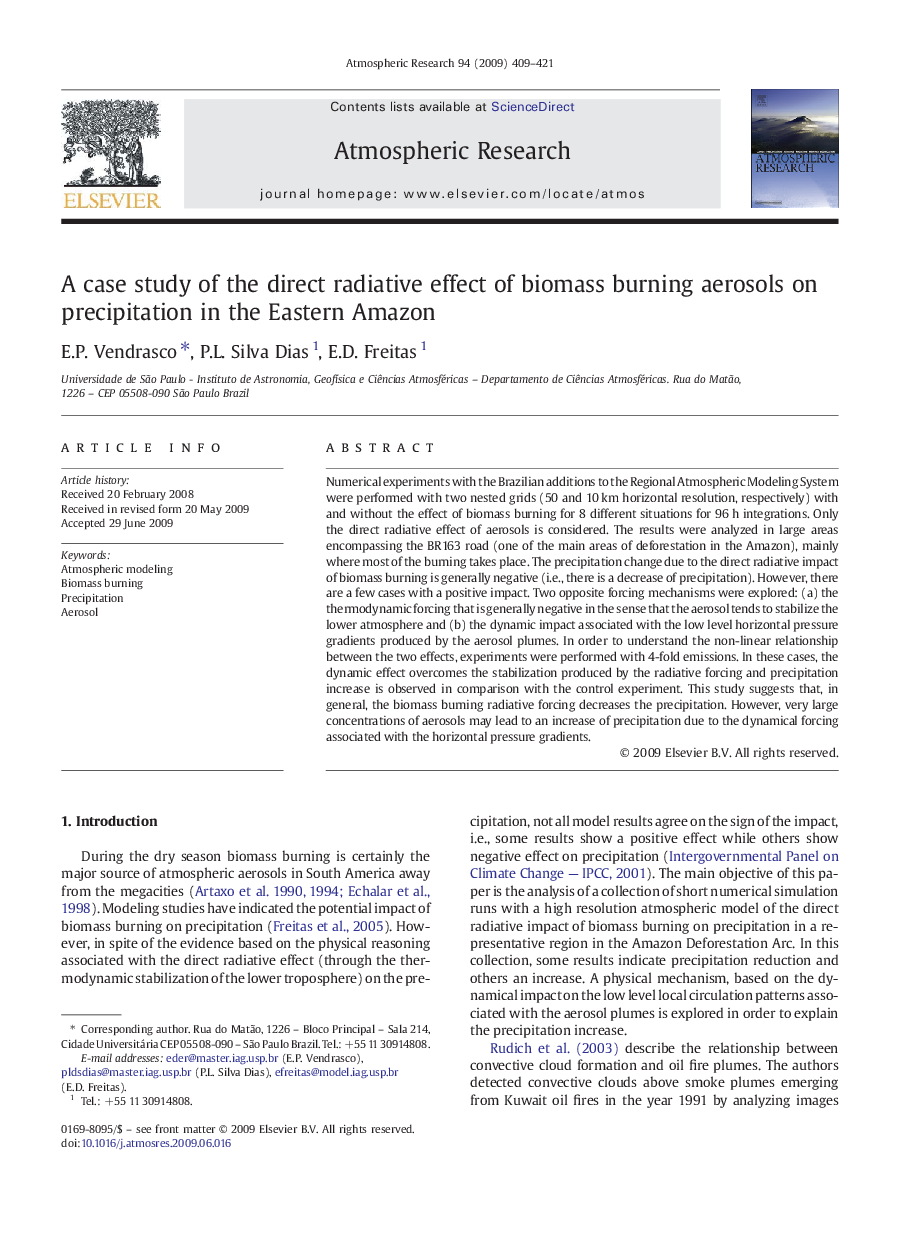| Article ID | Journal | Published Year | Pages | File Type |
|---|---|---|---|---|
| 4450912 | Atmospheric Research | 2009 | 13 Pages |
Numerical experiments with the Brazilian additions to the Regional Atmospheric Modeling System were performed with two nested grids (50 and 10 km horizontal resolution, respectively) with and without the effect of biomass burning for 8 different situations for 96 h integrations. Only the direct radiative effect of aerosols is considered. The results were analyzed in large areas encompassing the BR163 road (one of the main areas of deforestation in the Amazon), mainly where most of the burning takes place. The precipitation change due to the direct radiative impact of biomass burning is generally negative (i.e., there is a decrease of precipitation). However, there are a few cases with a positive impact. Two opposite forcing mechanisms were explored: (a) the thermodynamic forcing that is generally negative in the sense that the aerosol tends to stabilize the lower atmosphere and (b) the dynamic impact associated with the low level horizontal pressure gradients produced by the aerosol plumes. In order to understand the non-linear relationship between the two effects, experiments were performed with 4-fold emissions. In these cases, the dynamic effect overcomes the stabilization produced by the radiative forcing and precipitation increase is observed in comparison with the control experiment. This study suggests that, in general, the biomass burning radiative forcing decreases the precipitation. However, very large concentrations of aerosols may lead to an increase of precipitation due to the dynamical forcing associated with the horizontal pressure gradients.
